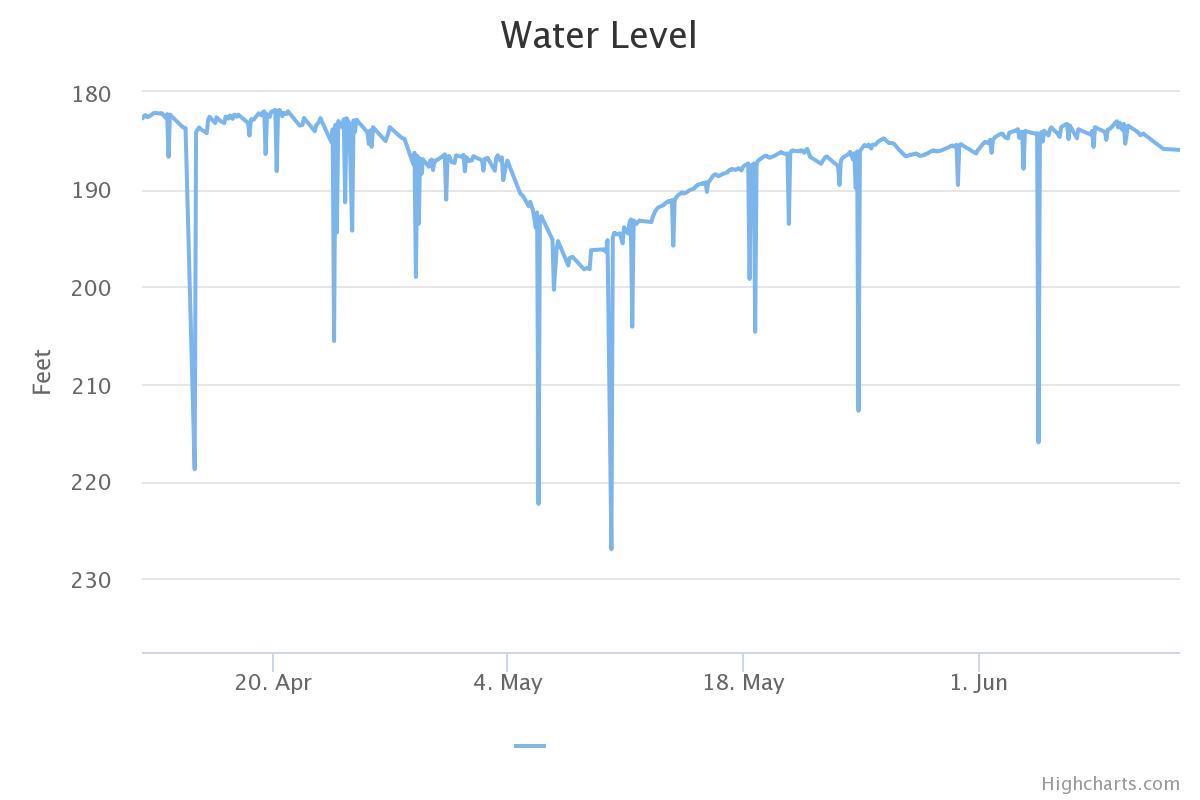Aquifer conditions are dynamic, with water levels often fluctuating due to drought, recharge, and pumping. The use of monitor wells with specialized equipment helps track these changes in order to inform policy that protects water supplies and spring flow for all users. After all, groundwater is a shared resource. We’re often asked the question: “How are aquifer conditions determined?” or “How are aquifers monitored?” The short answer: "Monitor wells!" You can view the District (and other agency) monitor wells and aquifer data HERE. BSEACD staff employ several types of equipment to collect continuous, accurate measurements and observe aquifer trends at a number of area monitor wells and for various aquifers. Equipment and techniques vary from manual periodic measurements with an electric tape, to automated sensors that record and store measurements over time. Many well owners have seen BSEACD staff visit their wells to take a manual water-level reading using an e-line. A manual measurement is a reliable and accurate method to measure water levels in a well and is often used to verify automated sensor accuracy. However, a manual measurement only represents a snapshot of a well's water level for a given date and hydrlogic condition and is time-consuming. |
While all monitor wells have manual measurements, wells that are only manually measured periodically are called ‘periodic’ monitor wells, meaning staff will make a visit one to two times a year to get a snapshot measurement. The most common technique the BSEACD uses to collect continuous water levels is equipping monitor wells with a pressure transducer probe. The probes measure the water pressure above the instrument as it changes and r ecords the corresponding water level every hour. Staff stop by these transducer wells quarterly to download the data, or more frequently to aid with scientific studies. |
While many continuous monitoring sites are active domestic wells, monitoring does not interfere with operation of the well. These monitor wells are often plumbed with a small PVC pipe that keeps the pressure transducer and cable away from the pump wires and the pipe that brings water to the surface. The newest type of monitoring technology being used for water-level measurements is a sonic (sound) sensor. This sonic sensor records the depth to water from the top of the well to the water level using sound pulses. The data is recorded in real-time and is transmitted via WiFi to a cloud-based platform which processes and archives the data. Data can be retrieved at any time with an internet connection. Staff have deployed seven sonic sensors on Edwards and Trinity wells in the last two years. One major advantage of this system is the ability to display water-level readings in real-time through the online dashboard (as seen in the hydrograph below) which helps to analyze trends over time. |
 |
An additional benefit is that the sensor can detect when the pump is active and can label the data it collects as under the influence of the pump. Several other groundwater entities are now deploying these units, including Edwards Aquifer Authority, Comal Trinity GCD, and Hays Trinity GCD. This is providing a larger network of real-time monitoring. Water levels are the most basic information one can collect about groundwater resources. Understanding how water levels are changing over time in individual wells, and across an aquifer, can tell us a lot about drought conditions and the increasing demand on groundwater resources. Therefore, collecting accurate, long-term, frequent, real-time water-level data is critical to having a science-based approach to conservation and management of our most precious shared resource. |


No comments:
Post a Comment